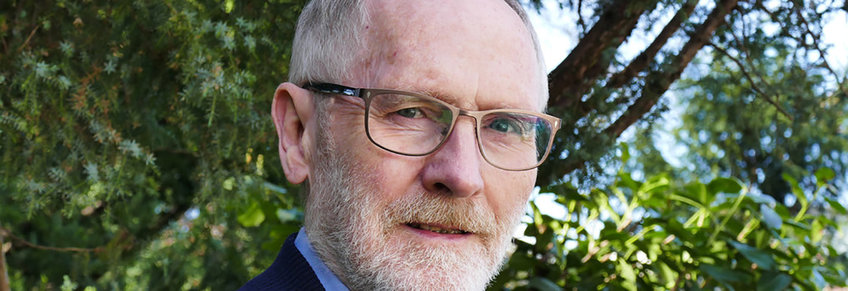
Roger Goody
Emeritus Group, Physical Biochemistry
Chemical-Tools > Transient Kinetic And Thermodynamic > Studies Analysis Of Simplified Interaction Systems >
Complex processes, which all too easily could get jumbled and cause chaos in the metabolism of the cell. But the cells of all higher organisms have come up with an ingenious solution: For the different biochemical processes they have developed separate reaction spaces enveloped by biomembranes – so-called compartments or organelles.
For some time scientists have known that between these compartments a brisk transport of molecules such as proteins and lipids takes place that are packed in small bubbles, – vesicles. In many cases, however, it was unclear how the transport and the sorting of the vesicles was regulated in detail. Roger Goody and his co-workers have succeeded in the past years to shed light on these processes. Using physical and chemical procedures such as x-ray crystal analysis, fluorescence microscopy, sophisticated chemical syntheses and protein engineering, they were able to elucidate the structure and function of several molecules which play a key role in the logistics of healthy cells and which, if defective, can lead to cancer, blindness or mental retardation. The focus of these studies is on a group of protein molecules, which scientists have named Rab proteins. They comprise the largest subgroup of the Ras proteins. Similar to a switch in an electric shaver, radio or hair dryer, all of these molecules see to it that important cell processes start at the right time and – as soon as they are no longer needed – that they are stopped again. The Rab proteins in the subgroup are specialised in a "coordinator" function: They control the transport and the fusing of the vesicles with the different compartments. However, to fulfil their task, as scientists know today, Rab proteins always have to be equipped with a suitable attachment. Not until a short fatty acid molecule, called a lipid tag, is attached to it, can it bind with a membrane and fulfil its function.
How essential the correct joining of Rab proteins is with their lipid tags is evident, for example, in a disease named choroideremia, the causes of which Goody and his co-workers have been studying for several years in one of their projects. Due to a genetically caused construction error in a Rab partner protein, the Rab Escort Protein REP-1, a large quantity of Rab protein Rab27 does not get any lipid tag and therefore accumulates excessively in the cell fluid. The consequence of this accumulation of unfinished Rab27 proteins is a massive apoptosis of retinal cells, which leads to a progressive degeneration of the retina. Already in childhood, people with this disease become nightblind, later many of them lose their sight completely. It is true that human cells also have a second form of REP protein (REP-2). But this does not seem to solve the problem. The only way to avert destruction of the retinal cells, the scientists hypothesise, is to transfer an intact copy of the REP-1 gene into the cells via gene therapy – which until now has been impossible.
However, the latest studies of Goody and his co-workers have shown that there may be another alternative. With a novel combination of chemical and molecular biological methods, the scientists recently succeeded in being the first to record the interaction of the involved proteins in real time. There it was shown: Not only REP-1, but also REP-2 is able, in principle, to attach fatty acid tags to Rab27 proteins and thus to make them able to function. But obviously, whether this will succeed in a sufficient quantity is a question of concentration. As Goody’s team discovered with the aid of fluorescing synthetic Rab proteins, there are namely several kinds of Rab proteins competing in the cells to “couple” with the REP proteins. It turned out that Rab27 has the worst chances: If only a small quantity of REP proteins is present, Rab27 miss out, to a large extent, on being supplied with fatty acid tags.
These findings present a completely new approach to the treatment of choroideremia: If scientists succeed in increasing the activity of the remaining REP-2 proteins in the cells of the patients with the aid of drugs, then it might be possible to stop the fatal destruction of the retinal cells and thus prevent people with the disease from becoming blind – even without gene therapy.